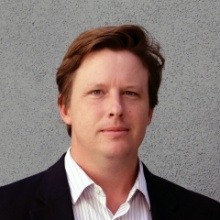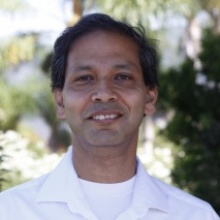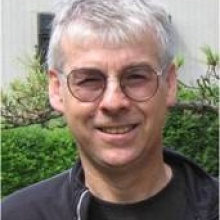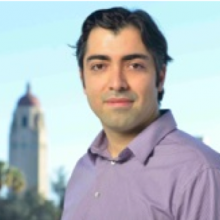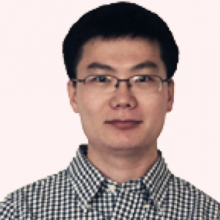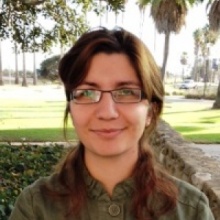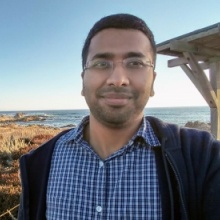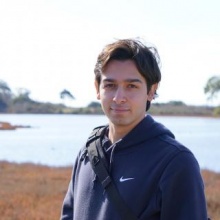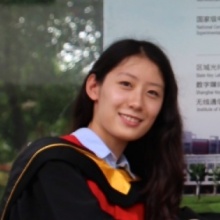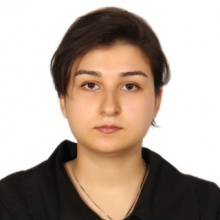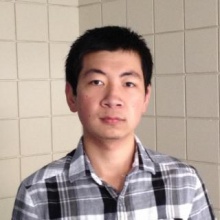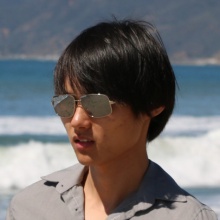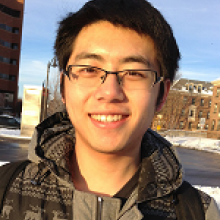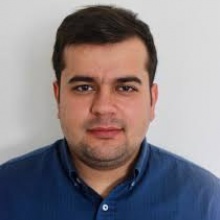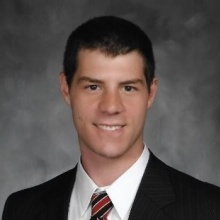About
This is a large 5-year project (09/01/2015-08/31/2020) funded by the NSF Nets program under grant CNS-1518812. The foundation for this grant was laid in part by work done under a smaller NSF Nets project, CNS-1317153, whose results are also merged into this page,
The goal of this project is to establish intellectual leadership in realizing the transformational potential of millimeter wave spectrum in making the next big leap in wireless networking. We have set bold goals in terms of system concepts, and plan to demonstrate that these goals are attainable through a research agenda combining cross-layer modeling, design, and performance evaluation, firmly grounded in experiment. The project team is interdisciplinary, with collective expertise spanning network protocols, physical layer fundamentals, mm wave hardware design, and extensive experience with experimental testbeds. This is a collaborative project between UCSB, Stanford and UCSD.
Our efforts focus on the 60 GHz unlicensed band (which has the greatest potential for nearterm impact), and the 120140 GHz bands (with the goal of demonstrating the utility and feasibility of pushing beyond 100 GHz), but the insights we obtain apply to a wide range of mm wave bands. We use as research drivers the following cutting edge system concepts: (a) Cellular 1000X, aimed at relieving the cellular capacity bottleneck via 60 GHz cellular links delivering Gbps to mobiles in dense urban environments; (b) "Wireless fiber" backhaul at 140 GHz for enabling Cellular 1000X, based on easy to deploy outdoor wireless mesh networks with link speeds approaching 40100 Gbps; (c) WiGig10X, aimed at indoor 60 GHz networking with link speeds beyond 40 Gbps, synergistic with nascent industry efforts such as NG60 to upgrade IEEE 802.11ad link speeds. While it is not possible to build commercial grade systems in academia, our goal is to mitigate the intellectual risk in pursuing these initiatives, to pave the way for technology transfer, and to enable engagement of a broader academic and industrial community in shaping this exciting area.
We are also exploring the opportunity of "reusing'' 60GHz networking radios for other mobile tasks. In particular, we focus on imaging the environment by capturing 60GHz transmissions reflected by nearby objects. 60GHz beams are highly directional and exhibit good reflective properties, and work reliably on a wide range of conditions. Thus, we plan to develop robust, practical mobile imaging systems using 60GHz networking radios. In addition to imaging in indoor environments, an important new direction we are exploring is the use of mm wave sensors for situational awareness for vehicular automation.
PIs
Students
- Ahmed Ahmed
- Ali Farid
Undergraduate Researchers
- Eythan Lam
Research Activities
System Experiments: We have close ties with Facebook’s Terragraph team, which has built out 60 GHz mesh networks with highly directional links (a prototype network is deployed on Facebook campus). GigaNets-funded students have visited and interned on Facebook campus to work on this project. Facebook has donated prototype mmWave nodes with phased arrays which we use for experiments supporting the GigaNets project. We have, for example, used this testbed to demonstrate the core algorithms underlying our compressive architecture for user tracking in picocellular networks. Meanwhile, PI Zhang at UCSD has been developing a baseband processing unit for software radios based on Xilinx’s latest RFSoC board, which supports high sampling rate (4Gsps) and multiple channels (up to 4 channels). This baseband processing unit will eventually be integrated with UCSB’s 140 GHz RF front-end and phased-arrays, to form the first 140 GHz MIMO mmWave software-radio platform.
Compressive picocellular architectures: One of the biggest bottlenecks in mmWave systems is the maintenance of pencil beams in the face of mobility and blockage. We had developed a compressive estimation strategy for efficient channel estimation and tracking prior to the start of this project. Within GigaNets, we have thought through a number of details of picocellular architectures (JSTSP 2016) built around compressive tracking. Base stations send out compressive beacons using pseudorandom phase control of their antenna arrays, and mobiles send feedback regarding the received beacons which the base stations employ to track the spatial channel to the mobile. This approach enables fine-grained tracking and coordination among picocellular base stations for agile path switching and resource allocation.
Noncoherent compressive estimation: The original compressive estimation algorithms that we developed require phase coherence across successive beacons, and hence do not work with off-the-shelf hardware, due to local oscillator drift between transmitter and receiver, and due to uncertainty in beacon launch times. Over the course of this project, we have developed noncoherent compressive tracking approaches which enable channel estimation and tracking using received signal strength measurements alone. Preliminary results (ACM Hotmobile 2017) show that it is possible to estimate and track the dominant path even without fine-grained timing control. We have since developed a novel technique (Asilomar 2018) which can handle multiple paths with comparable strengths, by combining ideas from phase retrieval and compressive estimation.
Hardware at 60 GHz: Despite the availability of commercial phased array chipsets at 60 GHz, academic research is blocked because access to these chipsets and their internal controls is severely limited. To fill this gap, Prof. Buckwalter’s group at UCSD is designing transmit and receive chipsets in CMOS, and the associated packaging, to be interfaced with the FPGA-based platform being developed by Prof. Zhang’s group at UCSD. We plan to make the chip design - barring ITAR concerns - available openly to the community.
Hardware at 100+ GHz: Prof. Rodwell’s group at UCSB is had developed multibeam (MIMO) phased array CMOS ICs at 140 GHz, to demonstrate that these bands will soon be accessible for mass market applications of massive MIMO. Four-channel 140GHz MIMO receivers and two-channel 140GHz phased-array transmitters, and short-range transmission at 8-10Gb/s has been demonstrated. Working 4-channel tiles of 140GHz MIMO transmitter and receiver ICs have been designed, fabricated, and tested. Prof. Arbabian’s group at Stanford has built an ultra low power OOK 130GHz system (ISSCC 2017), including silicon chip, packaging, dielectric lens, and interfaces with a data rate of 12.5Gbps. These techniques are now being leveraged for building coherent LoS MIMO systems at 130 GHz.
LoS MIMO design and demonstration (130 GHz, targeting rates approaching 100 Gbps): In a collaboration between Prof. Arbabian’s group at Stanford and Prof. Madhow’s group at UCSB, we are designing and implementing LoS MIMO transceivers at 130 GHz, targeting four-fold spatial multiplexing at a data rate of 20 Gbps per stream, leading to an aggregate data rate of 80 Gbps. We are exploring both hybrid analog-digital (Asilomar 2016) and fully digital (SPAWC 2018) approaches for space-time equalization. The hardware effort includes the design of QPSK TX, RX (two iterations), and the baseband analog processing chips, as well as the packaging. Measurements on the transmitter chips designed so far show a data rate of 40 Gbps.
Routing and resource allocation in mm wave mesh networks: We consider mm wave mesh networks for picocellular backhaul in urban environments, where a small number of gateway nodes provide connectivity to the wired Internet to a network of picocellular base stations connected by directional mm wave links. In a collaboration with Prof. Dongning Guo (Northwestern University), we first formulated (Allerton 2015) the problem of joint routing and resource allocation (accounting for mutual interference and half-duplex constraints) as a linear program. Numerical results for models of typical dense urban deployments (e.g., New York City) show, for example, that the delivered data rate to edge base stations is roughly about 10-20% of the raw link data rate. While the original linear programming approach scales exponentially with network size, we have now developed a scalable approach utilizing local variables, whose complexity scales only polynomially with network size. We are now able to perform optimization over large networks with 100s of nodes. Preliminary results were presented at the NSF RCN workshop in January 2018, and a journal submission is available on arxiv.
Millimeter wave sensing: We have been exploring how to leverage available 60 GHz radios for sensing, as well as developing system concepts for sparse sensing and vehicular situational awareness. Prof. Zheng’s group at U. Chicago has shown that we can use 60 GHz radios to compute “safety regions” where devices can move freely without collision, and to compute optimal paths for imaging within safety regions. The design was implemented on a small robotic car prototype. Experimental results (ACM Mobisys 2017) show the ability to image objects meters away with cm-level precision, and provides accurate estimates of objects’ surface materials.
We have explored the design of mm wave imaging radar for vehicular situational awareness. Preliminary results (Asilomar 2016) based on estimation-theoretic analysis, and simulations of the performance of superresolution algorithms, show that a network of low-cost monostatic mm wave sensors placed along the vehicle’s body could be quite effective.
Another effort in mm-wave sensing is a collaboration with Intel on design of sparse arrays of subarrays optimized for direction of arrival estimation. The goal is to utilize a given form factor (e.g., an area of 20cm by 20 cm) with a limited number of packaged subarrays (e.g., 8) to produce narrower beams than would be obtained by packing all the subarrays compactly. Sparse spatial sampling leads to grating lobes, which can cause large estimation errors. We have developed an optimization framework (Asilomar 2017) for trading off the narrower main beam versus sidelobes and grating lobes.
Security of mmWave communications: We use a commercial 60GHz testbed from Facebook’s Terragraph project to show that side-lobe eavesdropping is incredibly effective in both indoor and outdoor scenarios. Attacker can recover transmission in a large area with high success rate. We find that improved hardware can only reduce the impact of the eavesdropping attack, but not fully defend against it. Eavesdropping side lobes is still possible even after removing hardware artifacts from antennas and deploying more antenna elements. Finally, we find that although existing defenses show promising results against single-device eavesdroppers, they either impose impractical hardware requirements, or remain vulnerable against more advanced attackers, e.g., those with multiple devices.
Robust mmWave networking under blockage/mobility. In addition to interacting with UCSB on design of next-generation mmWave testbeds, Prof. Zhang’s team at UCSD has been focusing on designing, implementing and testing robust mmWave network protocols that resilient to blockage and mobility. The main research activities are summarized as follows.
- The intrinsic directionality and limited field-of-view of 60 GHz antennas make the 60 GHz mmWave links extremely sensitive to user mobility and orientation change. Hence, seamless coverage, even at room level, becomes challenging. We have designed Pia, a robust 60 GHz network architecture that can provide seamless coverage and mobility support at multi-Gbps bitrate (ACM MobiCom'17). Pia comprises multiple cooperating access points (APs). It leverages the pose information on mobile clients to proactively select the AP and manage multi-link spatial reuse. These decisions require a model of the pose/location of the APs and ambient reflectors. We have addressed these challenges through a set of AP-pose sensing and compressive angle estimation algorithms that fuse the pose measurement with link quality measurement on the client. Our Pia system has been implemented using commodity 60 GHz platforms with a Qualcomm 802.11ad chipset. Our experiments show that Pia reduces the occurrence of link outage by 6.3× and improves the spatial sharing capacity by 76%, compared to conventional schemes that only use in-band information for adaptation.
- Despite years of innovative research and development, gigabit-speed 60 GHz wireless networks are still not mainstream. The main concern for network operators and vendors is the unfavorable propagation characteristics due to short wavelength and high directionality, which renders the 60 GHz links highly vulnerable to blockage and mobility. However, the advent of multi-band chipsets opens the possibility of leveraging the more robust WiFi technology to assist 60 GHz in order to provide seamless, Gbps connectivity. We have designed MUST, an IEEE 802.11ad-compliant system that provides seamless, high-speed connectivity over multi-band 60 GHz and WiFi devices (ACM MobiCom'17). MUST has two key design components: (1) a WiFi-assisted 60 GHz link adaptation algorithm, which can instantaneously predict the best beam and PHY rate setting, with zero probing overhead at 60 GHz; and (2) a proactive blockage detection and switching algorithm which can redirect ongoing user traffic to the robust interface within sub-10 ms latency. We have implemented the MUST system on a commodity 60 GHz platform, in collaboration with HP Labs. Our experiments demonstrate that MUST can achieve 25-60% throughput gain over state-of-the-art solutions, while bringing almost 2 orders of magnitude cross-band switching latency improvement.
- We further proposed a mechanism called FastND that can accelerate the node discovery procedure in mmWave networks (ACM/IEEE Trans. on Networking). We implemented FastND on a mmWave software radio as well as a ray tracing simulator. FastND is built on our insights from test-bed measurements and theoretical analysis, which capture the impact of the inherent sparsity characteristic of 60 GHz channels. FastND incorporates a compressive channel recovery and an adaptive beam selection technique to speed up the neighbor discovery process. Experiment results show that FastND can achieve delay as low as 1/2 to 1/10 of that by existing de-facto protocol under adverse network scenarios.
Publications
- Gupta, Anant, Ahmet Dundar Sezer, and Upamanyu Madhow. "Multi-sensor Spatial Association using Joint Range-Doppler Features." arXiv preprint arXiv:2007.05907, 2020
- Simsek, Arda, Seong-Kyun Kim, Mohammed Abdelghany, Ahmed SH Ahmed, Ali A. Farid, Upamanyu Madhow, and Mark JW Rodwell. "A 146.7 GHz Transceiver with 5 GBaud Data Transmission using a Low-Cost Series-Fed Patch Antenna Array through Wirebonding Integration." In 2020 IEEE Radio and Wireless Symposium (RWS), pp. 68-71. IEEE, 2020
- Simsek, Arda, Ahmed SH Ahmed, Ali A. Farid, Utku Soylu, and Mark JW Rodwell. "A 140GHz Two-Channel CMOS Transmitter Using Low-Cost Packaging Technologies." In 2020 IEEE Wireless Communications and Networking Conference Workshops (WCNCW), Seoul, Korea (South), pp. 1-3, 25-28 May 2020
- Sawaby, M., B. Grave, C. Jany, C. Cheng, S. Kananian, P. Calascibetta, F. Gianesello, and A. Arbabian, "A Fully Integrated 32 Gbps 2x2 LoS MIMO Wireless Link with UWB Analog Processing for Point-to-Point Backhaul Applications," Proc. 2020 IEEE Radio Frequency Integrated Circuits Symposium, Los Angeles, CA, Jun. 2020
- Mattia, O. E., M. Sawaby, K. Zheng, A. Arbabian, and B. Murmann, "A 10 Gbps Continuous-Time Linear Equalizer for mm-Wave Dielectric Waveguide Communication," IEEE Solid-State Circuits Letters (L-SSC), vol. 3, pp. 266-269, Aug. 2020.
- Huang, Jingqi, Song Wang, Xinyu Zang. "Demystifying Millimeter-Wave V2X: Towards Robust and Efficient Directional Connectivity Under High Mobility," ACM International Conference on Mobile Computing and Networking (MobiCom), 2020
- Ning, Kang, Yihao Fang, Navid Hosseinzadeh, and James F. Buckwalter. "A 30-GHz CMOS SOI Outphasing Power Amplifier With Current Mode Combining for High Backoff Efficiency and Constant Envelope Operation." IEEE Journal of Solid-State Circuits 55, no. 5, pp. 1411-1421, 2019
- Mamandipoor, B., U. Madhow, and A. Arbabian, "2D mm-wave imaging based on singular value decomposition," 2019 IEEE MTT-S International Microwave Symposium (IMS), Boston, MA, June 2019
- Zhou, Anfu, Shaoqing Xu, Song Wang, Jingqi Huang, Shaoyuan Yang, Teng Wei, Xinyu Zhang, and Huadong Ma. "Robot Navigation in Radio Beam Space: Leveraging Robotic Intelligence for Seamless mmWave Network Coverage," ACM MobiHoc, 2019
- Mamandipoor, B., M. Fallahpour, A. Arbabian, and U. Madhow. "Millimeter Wave Imaging Using Sparse Arrays," Signal Processing, 2019
- Marzi, Zhinus, and Upamanyu Madhow. "Interference management and capacity analysis for mm-wave picocells in urban canyons," IEEE Journal on Selected Areas in Communications 37, no. 12, pp. 2715-2726, 2019
- Gupta, Anant, Madhow, Upamanyu., Arbabian, Amin, and Ali Sadri. "Design of Large Effective Apertures for Millimeter Wave Systems using a Sparse Array of Subarrays," IEEE Transactions on Signal Processing 67, no. 24, pp. 6483-6497, 2019
- Sawaby, M., N. Dolatsha, B. Grave, C. Chen and A. Arbabian, "A Fully-Packaged 130 GHz QPSK Transmitter with Integrated PRBS Generator," IEEE Solid-State Circuits Lett. (L-SSC), vol. 1, no. 7, pp. 166-169, 2018.
- Marzi, Zhinus, "Millimeter wave picocellular networks: Capacity analysis and system design," Ph.D. thesis, UC Santa Barbara, 2019
- Rasekh, Maryam Eslami, Dongning Guo, and Upamanyu Madhow. "Joint routing and resource allocation for millimeter wave picocellular backhaul," IEEE Transactions on Wireless Communications 19, no. 2, pp. 783-794, 2019
- Ning, Kang, and James F. Buckwalter. "A 28-GHz, 18-dBm, 48% PAE Stacked-FET Power Amplifier with Coupled-Inductor Neutralization in 45-nm SOI CMOS," In IEEE BiCMOS and Compound Semiconductor Integrated Circuits and Technology Symposium (BCICTS), pp. 85-88, 2018
- Sur, Sanjib, Ioannis Pefkianakis, Xinyu Zhang, and Kyu-Han Kim. "Towards Scalable and Ubiquitous Millimeter-Wave Wireless Networks," ACM International Conference on Mobile Computing and Networking (MobiCom), 2018
- Zhou, Anfu, Teng Wei, Huadong Ma, and Xinyu Zhang. "FastND: Accelerating Directional Neighbor Discovery for 60 GHz Millimeter-Wave Wireless Networks," ACM/IEEE Transactions on Networking (ToN), 2018
- Gopalakrishnan, Soorya, Zhinus Marzi, Upamanyu Madhow, and Ramtin Pedarsani. "Robust Adversarial Learning via Sparsifying Front Ends," arXiv preprint arXiv:1810.10625, 2018
- Rasekh, Maryam Eslami, and Upamanyu Madhow. "Noncoherent compressive channel estimation for mm-wave massive MIMO," 52nd Asilomar Conference on Signals, Systems, and Computers, 2018
- Simsek, Arda, Seong-Kyun Kim, and Mark Rodwell. "A 140 GHz MIMO Transceiver in 45 nm SOI CMOS," IEEE BiCMOS and Compound Semiconductor Integrated Circuits and Technology Symposium (BCICTS), 2018
- Raviteja, P., and U. Madhow, "Spatially Oversampled Demultiplexing in mmWave LoS MIMO," Proc. IEEE Workshop on Signal Processing Advances in Wireless Communication (SPAWC 2018), Kalamata, Greece, June 2018.
- Gopalakrishnan, S., Z. Marzi*, U. Madhow, and R. Pedarsani, "Combating Adversarial Attacks Using Sparse Representations," International Conference on Learning Representations (ICLR) Workshop Track, Vancouver, Canada, April 2018
- Marzi, Z., J. Hespanha and U. Madhow, "On the information in spike timing: neural codes derived from polychronous groups," Information Theory and Applications (ITA) Workshop Track, San Diego, USA, Feb. 2018
- Ning, Kang, and James F. Buckwalter. "An 18-dBm, 57 to 85-GHz, 4-stack FET Power Amplifier in 45-nm SOI CMOS," 2018 IEEE/MTT-S International Microwave Symposium-IMS, pp. 1453-1456. 2018
- Li, Zhijing, Zhujun Xiao, Yanzi Zhu, Irene Pattarachanyakul, Ben Y. Zhao, and Haitao Zheng. "Adversarial Localization against Wireless Cameras," Proceedings of the 19th International Workshop on Mobile Computing Systems & Applications, pp. 87-92. ACM, 2018
- Marzi, Zhinus, Soorya Gopalakrishnan, Upamanyu Madhow, and Ramtin Pedarsani. "Sparsity-based Defense against Adversarial Attacks on Linear Classifiers," IEEE International Symposium on Information Theory (ISIT), pp. 31-35. IEEE, 2018
- Sur, Sanjib, Ioannis Pefkianakis, Xinyu Zhang, and Kyu-Han Kim. "WiFi-Assisted 60 GHz Networks," ACM International Conference on Mobile Computing and Networking (MobiCom), 2017
- Wei, Tend, and Xinyu Zhang. "Pose Information Assisted 60 GHz Networks: Towards Seamless Coverage and Mobility Support," ACM International Conference on Mobile Computing and Networking (MobiCom), 2017
- Wei, Teng, Anfu Zhou, and Xinyu Zhang. "Facilitating Robust 60 GHz Network Deployment By Sensing Ambient Reflectors," USENIX Symposium on Networked Systems Design and Implementation (NSDI), 2017
- Zhou, Anfu, Xinyu Zhang, and Huadong Ma. "Beam-forecast: Facilitating Mobile 60 GHz Networks via Model-driven Beam Steering," IEEE Conference on Computer Communications (INFOCOM), 2017
- Bisognin, N. Nachabe, C. Luxey, F. Gianesello, D. Gloria, J. Costa , C. Fernandes , Y. Alvarez , A. Arboleya-Arboleya , J. Laviada, F. Las-Heras, N. Dolatsha, B. Grave, M. Sawaby, and A. Arbabian, "Ball Grid Array Module With Integrated Shaped Lens for 5G Backhaul/Fronthaul Communications in F-Band," IEEE Trans. Antennas Propag., vol. 65, no. 12, pp. 6380-6394, Dec. 2017
- Mamandipoor, Babak, Amin Arbabian, and Upamanyu Madhow. "Geometry-constrained Degrees of Freedom Analysis for Imaging Systems: Monostatic and Multistatic," arXiv preprint arXiv:1711.03585, 2017
- Hosseinzadeh, Navid, and James F. Buckwalter. "A compact, 37% fractional bandwidth millimeter-wave phase shifter using a wideband lange coupler for 60-GHz and E-band systems," Compound Semiconductor Integrated Circuit Symposium (CSICS), 2017 IEEE, pp. 1-4. IEEE, 2017
- Rasekh, Maryam Eslami, Zhinus Marzi, Yanzi Zhu, Upamanyu Madhow, and Haitao Zheng. "Noncoherent mmWave path tracking," Proceedings of the 18th International Workshop on Mobile Computing Systems and Applications, pp. 13-18. ACM, 2017
- Zhu, Yanzi, Yuanshun Yao, Ben Y. Zhao, and Haitao Zheng. "Object recognition and navigation using a single networking device," Proceedings of the 15th Annual International Conference on Mobile Systems, Applications, and Services, pp. 265-277. ACM, 2017
- Gupta, A., Upamanyu Madhow, Amin Arbabian, and Ali Sadri. "On beam design for sparse arrays of subarrays using multi-objective optimization and estimation-theoretic criteria," 2017 51st Asilomar Conference on Signals, Systems, and Computers, pp. 1105-1109. IEEE, 2017
- Dolatsha, N., B. Grave, M. Sawaby, C. Chen, A. Babveyh, S. Kananian, A. Bisognin, C. Luxey, F. Gianesello, J. Costa, C. Fernandes and A. Arbabian, "A Compact 130 GHz Fully-Packaged Point-to-Point Wireless System with 3D-Printed 26dBi Lens Antenna Achieving 12.5Gbps at 1.55 pJ/bit/meter," IEEE International Solid-State Circuits Conference (ISSCC), San Francisco, February 5-9, 2017
- Sur, Sanjib, Xinyu Zhang, Parameswaran Ramanathan, and Ranveer Chandra. "BeamSpy: Enabling Robust 60 GHz Links Under Blockage," USENIX Symposium on Networked Systems Design and Implementation (NSDI), 2016
- Dolatsha, N., C. Cheng, and A. Arbabian. "Loss and Dispersion Limitations in mm-Wave Dielectric Waveguides for High-Speed Links," IEEE Transactions on Terahertz Science and Technology, vol. 6, no. 4, Jul. 2016
- Mamandipoor, B., M. Fallahpour, G. Malysa, K. Noujeim, U. Madhow, and A. Arbabian. "Spatial-domain technique to overcome grating lobes in sparse monostatic mm-wave imaging systems," In Microwave Symposium (IMS), 2016 IEEE MTT-S International, 2016
- Gupta, A., Upamanyu Madhow, and Amin Arbabian. "Super-resolution in position and velocity estimation for short-range MM-wave radar," 50th Asilomar Conference on Signals, Systems and Computers, Pacifc Grove, USA, Nov. 2016
- Sawaby, M., B. Mamandipoor, U. Madhow, and A. Arbabian, "Analog Processing to Enable Scalable High-Throughput mm-Wave Wireless Fiber Systems," Invited Paper, 50th Asilomar Conference on Signals, Systems and Computers, Pacific Grove, USA, Nov. 2016
- Roufarshbaf, Hossein, Upamanyu Madhow, Mark Rodwell, and Sridhar Rajagopal. "Analog multiband: Efficient bandwidth scaling for mm-wave communication," IEEE Journal of Selected Topics in Signal Processing 10, no. 3, 2016
- Mamandipoor, Babak, Amin Arbabian, and Upamanyu Madhow. "New models and super-resolution techniques for short-range radar: Theory and experiments," Information Theory and Applications Workshop (ITA), pp. 1-7. IEEE, 2016
- Marzi, Zhinus, Dinesh Ramasamy, and Upamanyu Madhow. "Compressive channel estimation and tracking for large arrays in mm-wave picocells," IEEE Journal of Selected Topics in Signal Processing 10, no. 3, 2016
- Marzi, Zhinus, Upamanyu Madhow, and Haitao Zheng. "Interference analysis for mm-wave picocells," Global Communications Conference (GLOBECOM), 2015 IEEE, pp. 1-6, 2015
- Zhu, Yanzi, Yibo Zhu, Ben Y. Zhao, and Haitao Zheng. "Reusing 60ghz radios for mobile radar imaging," Proceedings of the 21st Annual International Conference on Mobile Computing and Networking, pp. 103-116. ACM, 2015
- Rasekh, Maryam Eslami, Dongning Guo, and Upamanyu Madhow. "Interference-aware routing and spectrum allocation for millimeter wave backhaul in urban picocells," Communication, Control, and Computing (Allerton), 2015 53rd Annual Allerton Conference on, pp. 1-7. IEEE, 2015
- Mamandipoor, Babak, Mahmoud Sawaby, Amin Arbabian, and Upamanyu Madhow. "Hardware-constrained signal processing for mm-Wave LoS MIMO," Signals, Systems and Computers, 2015 49th Asilomar Conference on, pp. 1427-1431. IEEE, 2015
- Zhu, Yibo, Yanzi Zhu, Zengbin Zhang, Ben Y. Zhao, and Haitao Zheng. "60GHz mobile imaging radar," Proceedings of the 16th International Workshop on Mobile Computing Systems and Applications, pp. 75-80. ACM, 2015
- Zhu, Yibo, Zengbin Zhang, Zhinus Marzi, Chris Nelson, Upamanyu Madhow, Ben Y. Zhao, and Haitao Zheng. "Demystifying 60GHz outdoor picocells," Proceedings of the 20th annual international conference on Mobile computing and networking, pp. 5-16. ACM, 2014
Educational Activities and Dissemination of Research
The students on this project represent a mix of backgrounds, including signal processing, electromagnetics and antenna design, computer science, and networking, and hence benefit significantly, in terms of interdisciplinary exposure, by working together. Millimeter wave communication examples have been incorporated into the undergraduate curriculum at UCSB.
In addition to dissemination via conference and journal publications, the PIs have been active in evangelization the huge potential for mmWave bands through a variety of avenues.
Prof. Madhow delivered a sequence of 8 invited lectures at IISc Bangalore (June 27 July 01, 2016) on mm wave systems, during the 2016 Joint Telematics Group/IEEE Information Theory Society Summer School on Signal Processing, Communications and Networks. These lectures, which highlighted the diversity and depth of research opportunities in mm wave, were attended by faculty and students from all over India.
Profs. Zhang and Madhow presented a half-day tutorial in ACM SIGCOMM’18, held on the UCLA campus. The tutorial received substantial interest from the SIGCOMM attendees, and the tutorial slides were posted on the SIGCOMM website and shared with the networking research community. In the tutorial, the PIs covered state-of-the-art research in mmWave, and highlighted the outcome from this GigaNets project. The contents include mmWave channel modeling and analysis, mmWave network standards and protocols, blockage and mobility issues, and mmWave sensing applications.
Prof Rodwell presented a plenary on mm-wave wireless technologies at the 2015 IEEE Asia-Pacific Microwave Conference. In 2016, he presented at Qualcomm a one-day short course on Transistor and IC design above 50GHz. He presented a one-hour workshop talk on Prospects for Multi-THz Transistors at the 2016 International Microwave Symposium. He gave an invited overview talk on wireless systems above 100GHz at the 2018 IEEE Radio and Wireless Week. He gave a plenary presentation on mm-wave and VLSI Transistors at the 2018 IEEE Compound Semiconductor Week. He taught a 3-hour short course on mm-wave ICs, transistors, and communications systems at the 2018 IEEE BiCMOS and Compound Semiconductor Integrated Circuits and Technology Symposium, a one-hour short course on the same subject at the 2019 IEEE Device Research Conference, and presented an invited talk on mm-wave systems and the semiconductor device requirements thereof at the 2018 IEEE International Electron Device Meeting. He presented design and realization of mm-wave communications systems at the NSF mm-wave RCN workshop, Raleigh, January , 2019, and at the 2019 Microelectronics Reliability and Qualification Workshop. He presented seminars on mm-wave communications systems at the NYU wireless center (October 2018) and at UCLA (May 2018).
Prof. Buckwalter volunteered to moderate a panel, and PI Madhow participated in another, at the NYU/Nokia-hosted Brooklyn 5G summit. Prof. Buckwalter presented two workshops at the 2018 IEEE International Microwave Symposium on work related to the program. The first was on signal-distribution techniques for millimeter-wave phased array circuitry using coupled oscillator techniques. The second workshop was on the implementation of a high average efficiency transmitter techniques for phased array antennas.
The PIs and their students regularly participate in NSF’s mmWave RCN (Research Coordination Network) workshops, which provide a valuable venue for interacting with other researchers in the field, from both industry and academia.
Broader Impact
Our work on 60 GHz hardware is aimed at creating a platform for experimentation that is more flexible than existing industry hardware, by virtue of its integration with a software-defined platform, and that is not subject to the proprietary restrictions for existing industry hardware. We hope to use this platform to demonstrate cutting edge concepts in compressive user tracking, 60 GHz LoS MIMO targeting indoor settings, and short-range mm-wave radar, thereby smoothing the path to technology transfer. Our work on 130 GHz LoS MIMO is aimed at realizing the promise of multiGigabit massive MIMO and “wireless fiber” using LoS MIMO. Our work on Cellular 1000X (mm wave to the mobile) establishes a new frontier for networking research. The unique characteristics of mm wave communication, such as link directionality and ease of blockage, raise novel challenges in cross-layer network design. Our work on 140GHz single-channel and spatially multiplexed links seeks to demonstrate 100:1 increases in the capacity of mobile and fixed infrastructure wireless networks.
We are in close touch with major companies in this space, including Facebook, Google, Qualcomm, Nokia, and Samsung, and continue to use these connections to try to promote technology transfer of the ideas that we develop.
The work performed under this project has also provided a solid foundation for a successful UCSB-led proposal for a large DARPA/SRCfunded center on mmwave and THz communication and sensing: ComSenter, which has a funding of about $27M over 5 years, and includes top-tier researchers in hardware, devices, systems, channel modeling and networking. The center, launched in January 2018, is led by Prof. Rodwell, and includes Profs. Buckwalter and Madhow.
Educational Resources
Lectures on mmWave communication and sensing
8-lecture series (pdf slides) delivered by Prof. Madhow at the 2016 Joint Telematics Group/IEEE Information Theory Society Summer School on Signal Processing, Communications, and Networks, held at the Indian Institute of Science, Bangalore, India in June-July 2016.
Tutorial on mmWave networking and systems
Delivered by Profs. Madhow and Zhang at the 2017 ACM SIGCOMM conference, August 2017.
Part 1. Introduction and Channel Models (pdf slides)
Part 2: Protocol Standards (pdf slides)
Part 3: Compressive Beamforming (pdf slides)
Part 4: Higher layers (pdf slides)
Part 5: mmWave sensing (pdf slides)
Part 6: LoS mmWave MIMO (pdf slides)
Part 7: Conclusions (pdf slides)
Software labs on mmWave sensing and communication developed for UCSB undergraduate communications sequence
(a) A lab (pdf) introducing mmWave radar, chirp waveforms, and 2D FFTs for range and Doppler information,
(b) A lab (pdf) introducing mmWave picocellular networks, including beamforming with spatial matched filter and linear MMSE, and system simulations with multiple users

